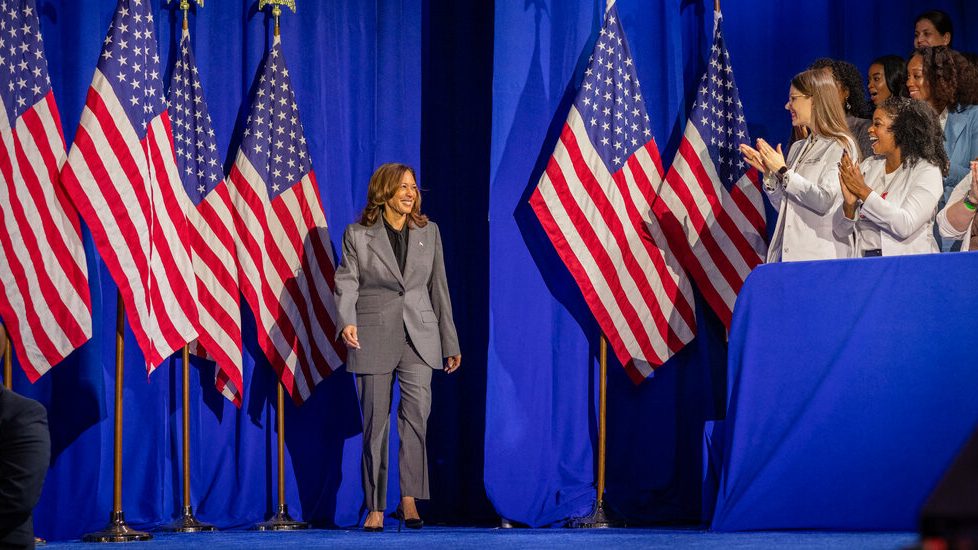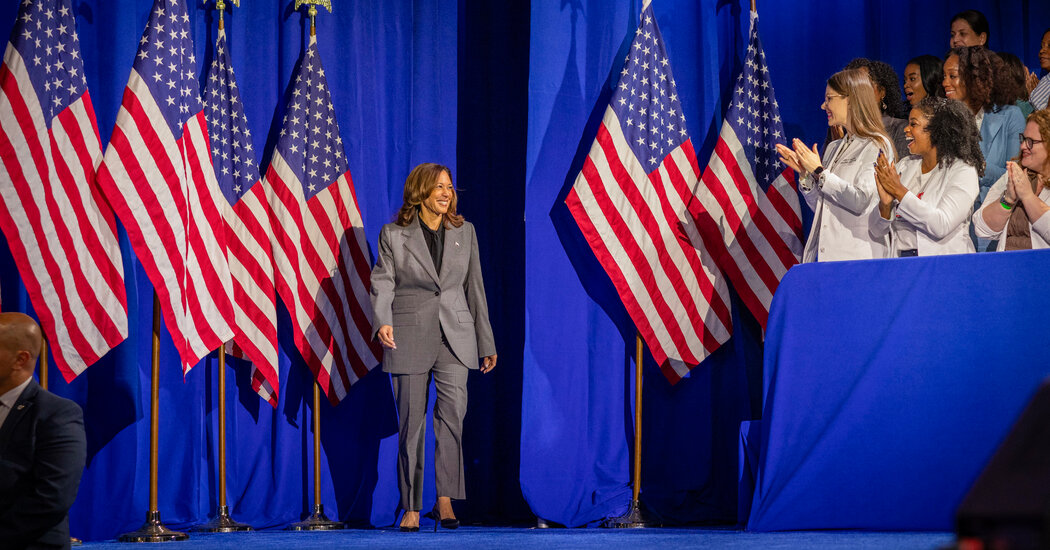Harris Enters Homestretch With a Far Bigger, Costlier Campaign Than Trump


Vice President Kamala Harris entered the homestretch of the general election building a campaign that was bigger than former President Donald J. Trump’s in nearly every discernible category.
She is raising more money than Mr. Trump, with her campaign collecting more than four times as much as his did in August.
She is spending far more money than he is — nearly three times more in August.
And she is holding on to more money than Mr. Trump, ending the month with $100 million more in the bank than him.
The vast discrepancies between the two operations were laid bare in new filings with the Federal Election Commission on Friday night from the candidates’ two main campaign committees, Harris for President and Donald J. Trump for President Inc. The reports detailed their August fund-raising, costs and cash-on-hand as of Aug. 30, along with similar figures from their national party committees.
The candidates had already announced their top-line figures for the month of August: Ms. Harris’s campaign, when combined with allied party committees, had almost tripled Mr. Trump in fund-raising, collecting $361 million for all of her committees while Mr. Trump’s campaign and associated committees took in just $130 million for his. All told, including some campaign committees that don’t file reports until next month, Mr. Trump entered September facing a $110 million cash deficit against Ms. Harris, according to their self-disclosed numbers.
On the surface, the campaigns built by Ms. Harris and Mr. Trump are similar. They both spend much of their money on advertising, and other big costs include private planes, payroll, postage and mail. But the new reports reveal how dissimilar the campaigns are in terms of scale.
Take media-related costs, for example. Both campaigns dedicated about 80 percent of their spending to that category. But the difference in raw numbers was enormous: The Harris campaign itself spent $137 million during August on media, as opposed to $47 million spent by the Trump campaign. Other records show that Mr. Trump is being significantly outspent on both television and digital advertising. (Of course, Mr. Trump has long been known for his ability to dominate news cycles, garnering what campaigns refer to as “earned media.”)
The Trump campaign’s second biggest category of costs was the roughly $10 million it spent on direct mail and related costs. Ms. Harris’s campaign does not seem to be prioritizing that expense, leaving all of its direct mail costs, measuring at just $3.7 million, to the Democratic National Committee.
Mr. Trump has proudly boasted of building a far leaner campaign team than has Ms. Harris, and it appears that Ms. Harris’s operation is far bigger than Mr. Trump’s, according to the filings. Ms. Harris’s campaign revealed that it spent about $5 million last month on payroll and taxes, and the Democratic National Committee reported about another $5 million on its own, for a combined total of over $10 million. The D.N.C. alone reported payments to over 620 staffers.
Assessing the direct size of Mr. Trump’s operation is not easy, given that some campaign salary costs appear to be routed to consulting firms. But many of Mr. Trump’s aides are paid by the Republican National Committee, and the R.N.C. disclosed only $3.7 million spent on payroll and taxes to about 330 staffers.
Bigger campaigns lose plenty often, of course, in part because those costs can add up. The Republican National Committee had $79 million on hand as of Aug. 30. The Democratic National Committee held considerably less, just $50 million, in part because the D.N.C. significantly outspent the R.N.C. by $24 million during the month.
Of course, all campaigns are working to spend down their cash-on-hand to near zero by Election Day, not wanting to let a dollar go to waste. Expenditures will likely climb dramatically in the final weeks before November, and the campaigns hope that their fund-raising can keep pace.
Outside groups like super PACs can help. Among the major donors to Mr. Trump’s main super PAC, MAGA Inc., in August was Diane Hendricks, the Wisconsin roofing magnate, who invested $10 million. Trump’s longtime friend and transition co-chair, Howard Lutnick, and Paul Singer, the hedge fund manager, each put $5 million into the group.
The super PAC has $25 million less on hand than does Ms. Harris’s main super PAC, Future Forward, which took in its biggest check in August, about $9 million from a fund associated with the League of Conservation Voters. Future Forward also received $3 million from Dustin Moskovitz, one of the co-founders of Facebook, who is expected to be one of the party’s single biggest donors in the final weeks of the race.
The post Harris Enters Homestretch With a Far Bigger, Costlier Campaign Than Trump appeared first on New York Times.
